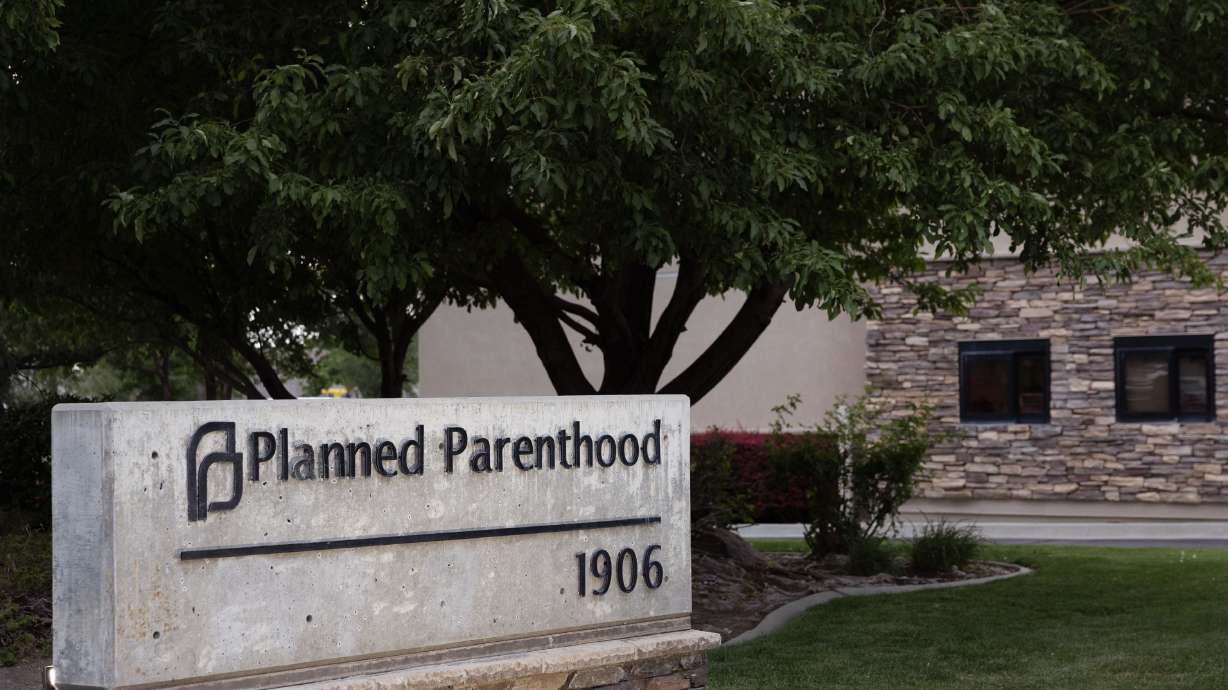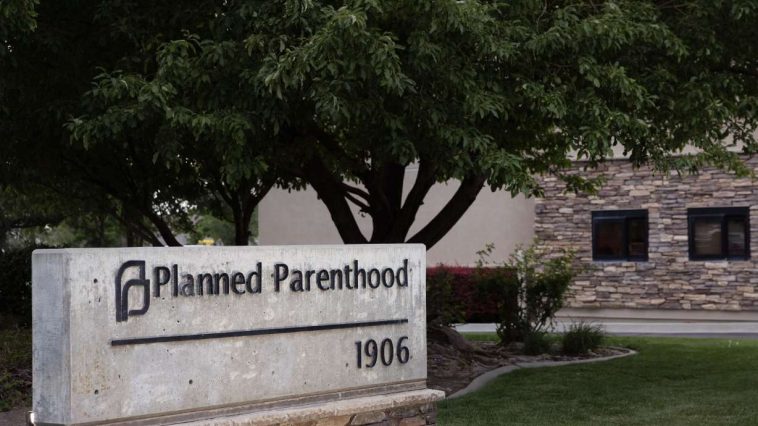
The Fight Over Medicaid Funding and Its Ripple Effects on Health Care
The recent lawsuit brought forth by the Planned Parenthood Association of Utah against the Trump administration has sparked intense discussion about how Medicaid funding cuts affect reproductive health care. At its heart, this case isn’t just about money—it’s about the ability of organizations to offer critical services such as cancer screenings, birth control, and safe, legal abortion procedures when needed. This opinion piece aims to explore the many layers of this issue and how it might impact not only those who rely on public health care but also the overall political landscape.
Legal challenges like this one put a spotlight on the tricky parts of how federal budgets and health services intersect. From the tangled issues of legislation to the confusing bits of judicial decisions, the ramifications of cutting Medicaid funds are far-reaching and, at times, overwhelming. In this editorial, we take a closer look at the underlying factors, discussing both the narrow details of the case and the wide-ranging effects on communities and health systems alike.
Understanding the Medicaid Funding Cuts and Their Impact on Health Clinics
Medicaid has long been the safety net for millions who might otherwise struggle to afford health care. With Planned Parenthood being one of the most prominent providers of reproductive health services, any reduction in Medicaid funding can trigger a cascade of negative consequences. The new restrictions, which target nonprofit clinics earning over a certain threshold, have effectively placed the spotlight on Planned Parenthood.
It might seem like a small change on the surface, but this decision highlights the complicated pieces of Medicaid funding. The law was crafted with the idea of limiting federal money for procedures that aren’t tied to nonabortion care, yet in doing so, it differentiates between providers who offer a broad range of services and those who consistently advocate for sexual and reproductive rights.
Critics argue that the policy unfairly targets Planned Parenthood by singling them out. They stress that these clinics do so much more than provide abortion services—they also offer cancer screenings, STD testing, and contraception counseling. Cutting off Medicaid funds from such organizations, they warn, could lead to a reduction in preventive services that are essential for communities, particularly for low-income families.
Lessons from Other Health Service Cuts
When similar cuts have been implemented in the past, communities have experienced diminished access to essential health services. The situation is a clear reminder of the importance of funding health programs that many depend on. Policymakers, health workers, and community leaders should ask themselves: what happens when the safety net begins to fray?
- Fewer preventive screenings lead to late detection of life-threatening conditions.
- Reduced access to contraception and family planning services can result in higher rates of unintended pregnancies.
- Communities may face increased pressure on emergency services if chronic conditions are not managed properly.
These bullet points illustrate just a few of the many ways that funding cuts can create a domino effect in communities already facing numerous challenges.
Examining the Judicial Pause: Temporary Relief Amid Ongoing Debate
A federal judge’s decision to temporarily halt part of the budget bill responsible for these Medicaid funding cuts has added a significant twist and turn in this legal saga. The judge ordered federal agencies to continue disbursing Medicaid funds as usual to Planned Parenthood for a period of 14 days, effectively buying time while the case is further examined.
This temporary order is not only a significant legal maneuver but also a signal to both supporters and critics that even in a politically charged environment, the judicial system can step in to scrutinize legislative decisions. It represents an effort to balance the immediate needs of patients with the long, winding process of judicial review.
For those fighting for access to affordable health care, this order is a welcome, albeit short-term, reprieve. It provides a window during which additional evidence and perspectives can be gathered and considered before any permanent decision is reached.
Understanding the Legal Tussle Over “Bill of Attainder”
One of the central points of contention in the lawsuit is the claim that the Medicaid restrictions amount to a “bill of attainder”—a form of legislation that unfairly punishes a specific group without the benefit of a judicial trial. Although this claim is debated among legal experts, it highlights the fine points of constitutional rights and the limits of federal legislative power.
Senator Mike Lee and other critics argue that denying federal funding does not constitute punishment. They believe that while the decision may target certain organizations, the policy is within the scope of congressional authority and does not single out Planned Parenthood in a way that crosses constitutional boundaries. This disagreement underscores a subtle yet significant difference in how various branches of government interpret their roles in protecting public health versus enforcing budgetary restrictions.
The legal arguments on both sides are a classic example of working through tangled issues with both legal and political consequences. The debate itself is laden with implications, from judicial overreach to the balance of power between the legislature and the courts.
Political Implications: The Intersection of Budget, Policy, and Public Opinion
This lawsuit occurs during a politically charged era where funding decisions are often entangled with ideological debates over personal rights and moral responsibilities. On one hand, some view the Medicaid funding cuts as a necessary measure to ensure that federal dollars are used in accordance with longstanding policies that separate federal funding from abortion services. On the other hand, opponents see these cuts as a direct attack on access to comprehensive reproductive health care.
Whether one agrees with the funding cuts or opposes them, it is clear that decisions of this nature are never made in a vacuum. Instead, they are a product of political bargaining—a balancing act between fiscal responsibility and ensuring that patients have unimpeded access to critical health services.
How Political Stances Shape Public Opinion
Public opinion on this matter is heavily influenced by individual political beliefs. Those who strongly support reproductive rights see the budget cuts as an off-putting encroachment on the provision of comprehensive health care. Conversely, those who champion conservative approaches to government spending may see the cuts as a necessary evolution of Medicaid policy.
This division is represented not only in the courtroom but also in public discourse—on social media platforms, cable news, and local community forums. As these conversations continue, it becomes apparent that any decision regarding Medicaid funding will have consequences that spread far beyond the confines of a court filing.
Key Points in the Political Debate
| Aspect | Supportive View | Opposing View |
|---|---|---|
| Funding Efficiency |
|
|
| Constitutional Concerns |
|
|
| Impact on Patient Care |
|
|
This table encapsulates the small distinctions in the political argument, making it clear that even among well-meaning policymakers, the little twists and contentious details matter a great deal.
Community Impact: How Funding Cuts Affect Everyday Lives
While the debate at higher levels of government certainly grabs headlines, it is the local communities that feel the effects more immediately. Planned Parenthood clinics have long served as lifelines in many parts of the country, offering services that not only address immediate health needs but also work to prevent long-term health complications.
For individuals who rely on Medicaid, the idea of losing access to such preventive care can be particularly nerve-racking. Many members of vulnerable communities find themselves caught in a loop of limited resources and increasing costs—making it even more challenging when a major funding source is threatened.
Personal Stories and Community Feedback
Consider the following anecdote from a community member in Utah, who has overseen health care access challenges for years:
- “Our local clinic has always been more than just a place to get a check-up. They offer critical services like cancer screenings that catch issues early. If they lose Medicaid funds, so do we, and that’s a scary prospect.”
- “Many people here depend on the clinic, not only for reproductive health but for regular check-ups and health education. Removing this funding is like pulling the rug out from under a community that has already been struggling.”
These personal testimonies remind us that behind every policy and legal argument are real people facing overwhelming hardships. They illustrate how government decisions—even those that seem abstract—can have tangible and sometimes devastating effects on everyday lives.
Weighing the Economic Consequences of Medicaid Reductions
Beyond the humanitarian concerns, there is also an economic dimension to consider. Medicaid funding cuts can lead to broader economic challenges, both for individual clinics and the communities they serve. Reduced revenue for providers like Planned Parenthood could force these organizations to cut back on services, leading, in turn, to increased health care costs in other parts of the system.
The economic argument in this scenario is full of tricky parts. Proponents of the cuts argue that the budget must be streamlined and that reducing unnecessary spending is essential for long-term fiscal health. However, critics counter that preventive care is super important—not only for individual well-being but also for reducing future health care expenditures through early intervention and disease prevention.
Cost-Benefit Analysis: Short-Term Savings vs. Long-Term Consequences
When weighing the pros and cons, one must consider both immediate budgetary relief and the potential for longer-term economic strain. A short-term reduction in spending might seem appealing, but if it leads to a spike in emergency care or untreated conditions, the overall health care costs may end up skyrocketing over time.
- Short-Term Savings: Limiting Medicaid funds may lead to an immediate decrease in government spending.
- Long-Term Costs: Lack of preventive care can result in more severe health issues that are expensive to treat.
- Community Health Impact: Economic downturns in local health services can affect job stability, community morale, and even local economies.
This cost-benefit analysis shows that while the intention of reducing federal spending might be well-meaning, the hidden complexities and unpredictable economic ripples can lead to even greater financial burdens down the road.
The Role of the Judiciary in Shaping Health Policy
The involvement of the federal judiciary in pausing the Medicaid funding cut reveals another key aspect of this multifaceted debate. Courts are now stepping in to weigh the competing arguments of fiscal conservatism versus equitable health care access. Their decision to grant a temporary restraining order underscores the challenge of finding the right balance between legislative intent and individual rights.
This involvement leads us to consider the following questions: How long should the judiciary’s temporary relief last, and what does this say about the power distribution between branches of government? Moreover, what precedent might this case set for future legislation that aims to selectively target organizations based on their funding profiles?
Understanding Judicial Checks and Balances
At its core, the judicial system is designed to serve as a check on the powers of the legislature and the executive. In this case, the judge’s decision to pause part of the budget bill is seen by many as a necessary step to protect the rights of health care providers and their patients. It illustrates how, when delicate issues arise, the courts can play a super important role in managing your way through the exact balance of policy and individual rights.
Nevertheless, critics argue that this intervention is an overstep—a moment where judicial action may be seen as meddling in the legislative process. Senator Mike Lee’s comments encapsulate this sentiment, suggesting that such actions could be seen as a meddling intrusion in what many view as a debate better suited for elected officials. This clash of perceptions points to a deeper conflict over how best to address public health and funding priorities within a democracy.
Finding a Path Forward: Constructive Dialogues and Policy Reform
Given the tangled issues and challenging bits present in this debate, it is clear that any resolution must involve robust discussions among stakeholders. Rather than allowing political partisanship to drive the conversation, a constructive dialogue is needed—one that considers the real-world outcomes of policy decisions on both health and economic fronts.
Policymakers need to work with health experts, community leaders, and legal professionals to create policies that are fair, balanced, and responsive to the needs of those who depend on Medicaid. Open forums, legislative hearings, and bipartisan committees could serve as useful venues for sorting out these tricky parts.
Steps Toward Balanced Health Policy
- Inclusive Policy Formation: Engage stakeholders from across the spectrum to discuss and refine Medicaid policies.
- Data-Driven Decisions: Rely on empirical evidence about the long-term impacts of funding cuts on community health outcomes.
- Flexibility in Funding: Consider approaches that allow state and local administrators to tailor funding decisions based on immediate community needs.
- Judicial Oversight: Ensure that the judiciary remains a balanced arbiter capable of stepping in only when necessary, without overstepping legislative responsibilities.
These guided steps help illustrate how a balanced approach can potentially bridge the gap between differing viewpoints while protecting the interests of vulnerable populations.
Community Voices and Grassroots Activism: The Human Side of the Debate
While policy debates and legal maneuvers capture headlines, the human stories behind these issues are what make them truly significant. Local communities have expressed deep concern over the implications of Medicaid funding cuts, particularly when it comes to the personal services provided by organizations like Planned Parenthood.
Many community members, activists, and local health professionals have shared their experiences, highlighting how every dollar allocated to these services can make a significant difference. Grassroots efforts across the country continue to stress that funding cuts not only diminish access to essential services but also erode the trust between communities and the government.
Real-Life Examples and Testimonials
Consider one resident’s perspective:
- “I rely on my local clinic for regular health check-ups, and they’ve always been there when I needed preventive care. Losing Medicaid funding would create a void that could be devastating for our community.”
- “Our community has rallied together on numerous occasions to support local health initiatives. This decision feels like a test of our collective resolve to stand up for quality health care.”
These testimonials shed light on the essential nature of the support provided by organizations affected by these cuts. They remind us that beyond legal arguments and political posturing, real people and families are affected, and their quality of life is at stake.
Long-Term Implications for Public Health and Policy Development
As this lawsuit continues to unfold, it raises important questions about the future of public health funding and the role of government in ensuring access to comprehensive care. It is a stark reminder that policy changes, however well-intentioned, can have widespread repercussions on both a community and national scale.
Future policy direction will likely require a nuanced approach—one that considers not only the immediate financial benefits of cutting funding but also the long-term economic and social costs. The legal challenges currently underway may serve as a catalyst for refining government policy to better serve all citizens, regardless of their income or political affiliation.
Potential Reforms on the Horizon
- Reevaluating Medicaid Disbursements: Legislators might consider reviewing how funds are allocated to ensure that services with significant preventive impacts are prioritized.
- Strengthening Community Health Programs: Increased support for local health initiatives can help offset any potential losses from federal funding cuts.
- Enhanced Stakeholder Engagement: Developing a more inclusive legislative process that actively seeks input from health care providers and community leaders.
By taking these steps, policymakers can work toward a system that not only manages the immediate twists and turns of budgetary shifts but also protects the health and well-being of communities over the long term.
Final Thoughts: Balancing Fiscal Responsibility With Health Care Accessibility
In the final analysis, the legal and political battles over Medicaid funding cuts highlight a broader societal challenge: how to balance fiscal responsibility with the super important duty of providing quality, affordable health care. The debate over Planned Parenthood’s Medicaid funds is loaded with issues that merit careful consideration, from the individual impacts on patient care to the broader economic consequences for local communities.
The temporary pause issued by the federal judge, while offering some relief, is just one step in what is likely to be a long regulatory and legislative process. As stakeholders continue to poke around the tangled issues of health care financing and constitutional rights, it is critical that each decision be made with a clear understanding of both its immediate and long-term effects.
Whether you support the funding cuts or oppose them, it is clear that this debate touches the lives of countless individuals who depend on a robust health care system. As the discussion moves forward, let us all work together to find our way through these complicated pieces, ensuring that the system remains both fiscally responsible and accessible to all—especially those who need it the most.
Key Takeaways for Policy Makers and Community Leaders
- Any decision affecting Medicaid funding balances fiscal policies with indispensable community health needs.
- Judicial interventions, such as temporary stays, offer crucial breathing room but are not long-term solutions.
- Constructive, bipartisan dialogue must inform future policy decisions to ensure the well-being of vulnerable communities.
- Grassroots feedback and real-life personal testimonies should be integral to the policy-making process.
In closing, addressing Medicaid funding cuts through a balanced, well-informed approach is a challenge loaded with issues. However, by remaining committed to a dialogue that respects both the financial constraints and the undeniable human need for health care, we can hopefully steer through these difficult times and emerge with policies that uphold the well being of all citizens.
This ongoing legal and political debate not only tests the strength of our institutions but also our collective dedication to public health and social equity. As we continue to get into these issues, the importance of maintaining accessible health services for everyone becomes ever more clear—a lesson that should remain front and center as our communities evolve in the face of changing policy landscapes.
Ultimately, when we look at the fine points and small distinctions in this case, it becomes evident that an effective solution requires collaboration, empathy, and a willingness to figure a path that honors both our fiscal responsibilities and our commitment to human dignity. The coming months and years will likely see further developments, and it will be essential for all involved to work together in a spirit of cooperation and mutual respect.
As citizens, policymakers, and advocates alike continue to work through these challenging matters, staying informed and engaged is key. Only then can we hope to shape a future where governmental decisions protect not only our economic stability but also our health, our families, and our communities.
Originally Post From https://www.ksl.com/article/51342206/utah-planned-parenthood-sues-trump-admin-for-cutting-medicaid-funding
Read more about this topic at
Center for Reproductive Rights
Top 7 Things You Can Do Right Now for U.S. Abortion Rights


